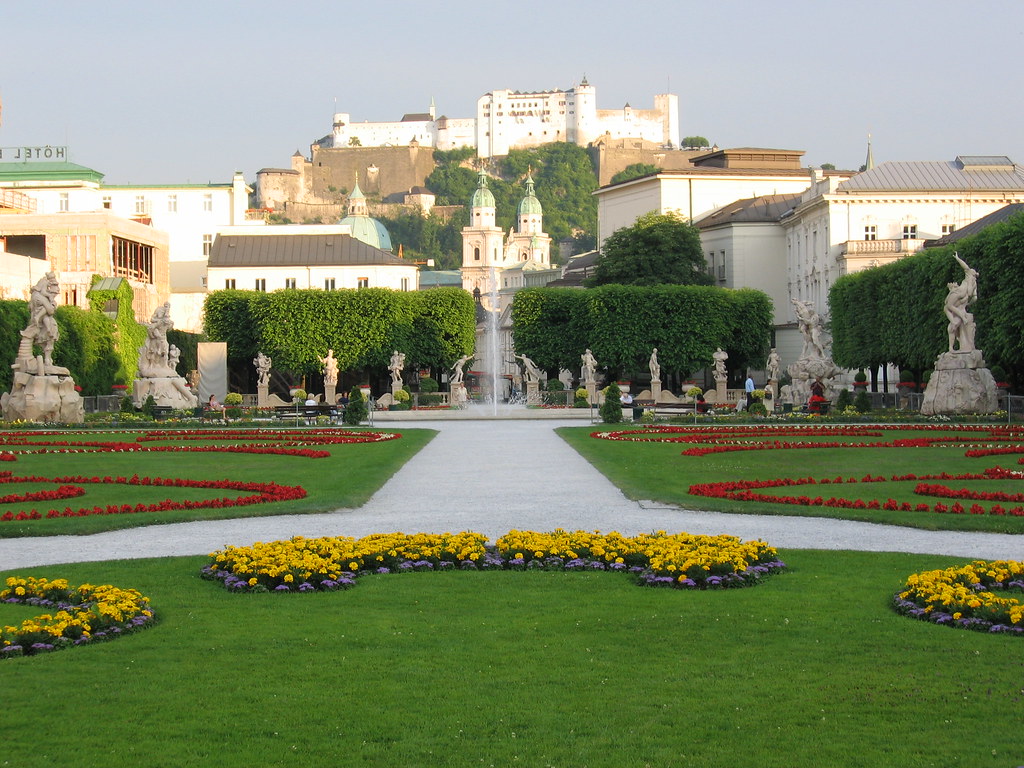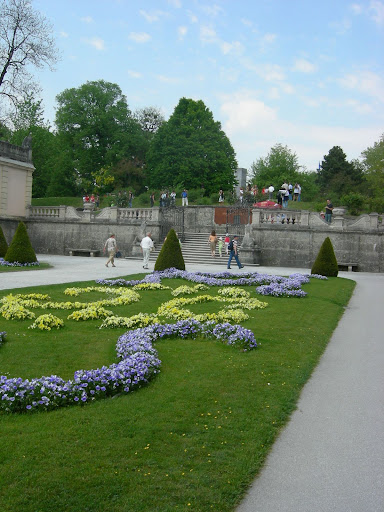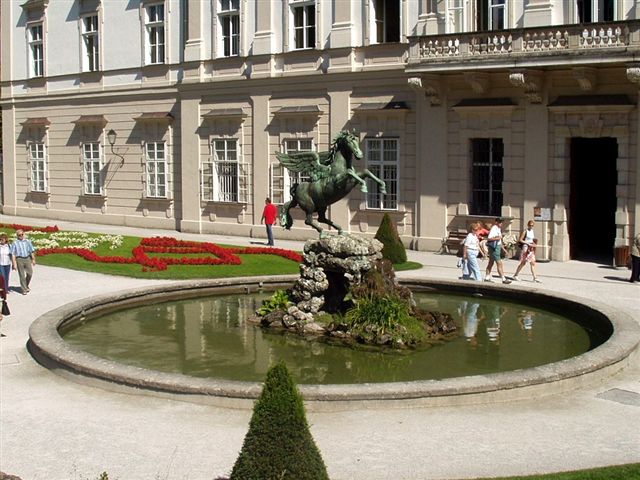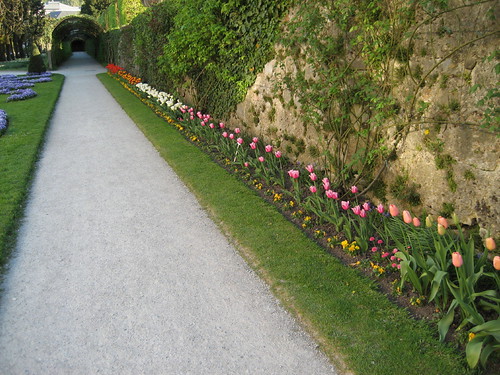The world-famous
Mirabell Gardens were built along a north-south axis and oriented towards the Hohensalzburg Fortress and the Salzburger Dom cathedral. The original gardens were re-modelled according to plans by Johann Bernhard Fischer von Erlach under the reign of Prince Archbishop Johann Ernst Thun in 1689.

Only some decades later, Franz Anton Danreiter altered them again in 1730, shaping what is now considered to be one of the most beautiful Baroque gardens of Europe. In the 19th century, the Mirabell Gardens were changed once again, several parts were destructed, such as the original Zwergerlgarten (dwarf garden), some arcades facing Mirabell square and the so-called Sala terena in the Northwest of the Mirabell Castle.
The “Grand Parterre” is the oldest part of the Mirabell Gardens that is still preserved. If you enter the parterre from the Markartplatz (where Mozart’s living house and the Doppler birthplace are), you will encounter an inner and outer balustrade that is flanked by copies of the two Borghesian fencer couples from the late 17th century. The inner couple was made by A. Götzinger, the outer one by M. B. Mandl.
On the balustrades themselves you will see statues of Roman gods from 1689: Diana, Flora, Minerva, Ceres, Pomona. Venus, Vesta, Juno and Chronos, Bacchus, Jupiter, Mars, Hercules, Vulcan, Hermes and Apollo. These statues were made by B. van Opstal.
The Grand Parterre is embraced by a marble railing decorated with vases by Fischer von Erlach. In the heart of the garden, you will see a large fountain, with four statue groups around it: the rape of Prosperina, rape of Helena, Aeneas and Anchises, and finally Hercules and Antaeus. These statues were made by Ottavio Mosto in 1690.
Next to the main part of the Grand Parterre, set apart a little towards the Mirabellplatz Square, you will see a court with a Papagena fountain echoing the Papageno Fountain in the Pfeiffergasse. This court also hosts the “Orangerie”, which is still used as a greenhouse and can be visited without charge. To the opposite of the Orangerie there is a pavilion that is used by the “Salzburger Barockmuseum”, the Salzburg Museum of Baroque.






 credited from visitsalzburg.net
credited from visitsalzburg.net











No comments:
Post a Comment